By Michael D. Hull
Losses were high and morale low when the U.S. Eighth Air Force intensified its heavy bomber missions over Nazi-occupied Europe in late 1942.
As the Americans persisted with their daylight offensive, complementing the Royal Air Force’s nightly raids, the air crews were eager and gallant, but misgivings mounted. The major threat came from the German fighter force, with its experienced pilots and rugged planes ready to maul the Boeing B-17 Flying Fortress and Consolidated B-24 Liberator formations.
Some planners had promised that the fabled Flying Fortress with its 10 machine guns could easily hold its own against enemy interference, but this proved to be a pipe dream. Effective escorts were desperately needed.
The first U.S. bombardment groups were accompanied to targets in France by RAF Supermarine Spitfires, but their limited range precluded them from longer forays. There was a clamor in the USAAF high echelons for the rapid development of a fighter that could stay with the bombers and fend off the Luftwaffe’s predatory Messerschmitt Me-109s and Focke Wulf FW-190s, but help was on the way.
It came from Republic Aviation Corp. of Farmingdale, Long Island, following a conference in June 1940 at which Army Air Corps leaders explained the urgent need for a high-performance fighter that could compare with European planes. One of the attendees, Republic’s brilliant, Russian-born chief designer, Alexander “Sasha” Kartveli, began work on the back of an envelope, and then he and his team drafted blueprints for an improved version of the former Seversky Aircraft Corp.’s disappointing P-43 Lancer fighter.
The result was the P-47 Thunderbolt, a big single-seat fighter powered by a 2,300-horsepower Pratt & Whitney radial engine, with a top speed of 428 miles an hour, a range of 1,000 miles, and a ceiling of about 42,000 feet. It mounted six or eight .50-caliber machine guns and could carry up to 2,500 pounds of bombs or rockets. The P-47 would prove to be one of the most effective and widely used Allied fighters of World War II.
A prototype, XP-47B, flew for the first time on May 6, 1941. In addition to the Farmingdale plant, production lines were established in Evansville, Indiana, and Buffalo, New York. Many teething problems were encountered in getting the new planes operational, and the XP-47B crashed on August 8, 1942. But deliveries of P-47B models to Army Air Forces squadrons began on March 18, 1942. The early P-47s were called “razorbacks” because of their raised rear fuselage leading to the framed cockpit hood. Several hundred of the planes went to British, Soviet, and Free French fighter units under the Lend Lease Program. The RAF used Thunderbolts extensively in North Africa, India, and Burma.
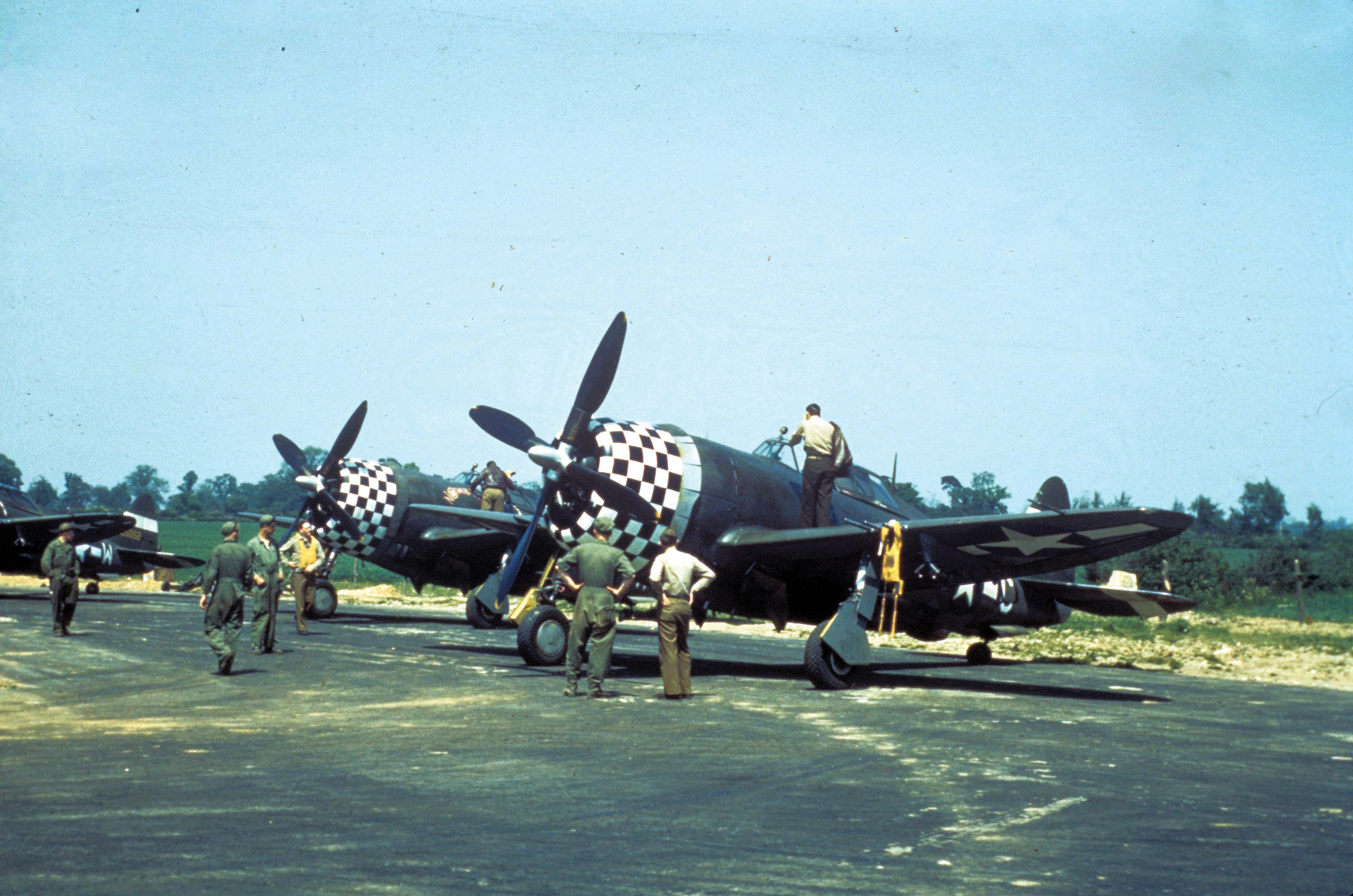
The first P-47s to see service under American colors were received in June 1942 by the Army Air Forces’ 56th Fighter Group, which, by January 1943, had joined the Eighth Air Force in Britain. It was reinforced by the 78th Fighter Group, and they began operational sorties on the following April 13. They flew their first escort mission on May 4, 1943, when the 56th Fighter Group accompanied B-17s to Antwerp.
Initial encounters with German fighters showed that, while the Thunderbolt was lacking in performance and maneuverability, it was rugged and could out-dive any other fighter. It was the first USAAF fighter to provide the sorely needed protection to the Eighth Air Force B-17 and B-24 streams.
Colonel Edward W. Anderson’s 4th Fighter Group, based at the Debden RAF station near Saffron Walden, Essex, was equipped with the new planes in March 1943. Formed the previous September from the 71st, 121st, and 133rd Eagle Squadrons of the RAF, the group’s experienced pilots, who had been blooded in graceful Spitfires, were less than enthusiastic when they climbed into the bulky Thunderbolts. The P-47 weighed almost three times as much as the British fighter, and the Eagles had doubts about its firepower—eight machine guns compared with the Spitfire’s four 20mm cannons.
Enemy kills came slowly, but the P-47 scored its first aerial victory south of Dieppe on April 15, 1943, and the American fliers came to appreciate the plane’s qualities. In fact, they soon fell in love with it. The Thunderbolt was nicknamed the “Jug” because it was thought to resemble a container for homemade whiskey.
Major (later Lt. Col.) James A. Goodson, who had joined the RAF in 1940 and downed a total of 14 German planes, said, “The P-47, in spite of its weight and size, was an amazing aircraft, and we continued to build up our score, almost in spite of ourselves.”
At Debden, Goodson checked out Captain Don Blakeslee on the Thunderbolt. Blakeslee, a bold natural flier who had piloted Spitfires with the RAF and the Eagle Squadrons since May 1941, was not impressed. “Of course, he didn’t like it,” Goodson observed. “It was daunting to haul seven tons of plane around the sky after the finger-tip touch needed for the Spit.” After his initial flight, Blakeslee griped to Flight Cmdr. James E. “Johnny” Johnson, the RAF’s leading British-born ace of the war, that the bulky, low-slung P-47 seemed reluctant to leave the ground and anxious to get back on it. It was the largest and heaviest piston-engine fighter ever to have served with the USAAF.
RAF pilots who looked over the plane shuddered and politely informed their American comrades that they were about to die. The largest single-engine fighter of the war was considered too slow and unresponsive to survive in the sky against Luftwaffe Me-109s and FW1-190s. The men of the 4th Fighter Group and other units had to be convinced otherwise by their commanders.
During a P-47 sortie over Belgium on April 15, 1943, Blakeslee blasted an FW-190 and sent it flaming into a suburb of Ostend. At the debriefing, Major Goodson told him, “I told you the Jug could out-dive them.” Blakeslee grudgingly conceded, “Well, it damn well ought to be able to dive; it sure as hell can’t climb.”
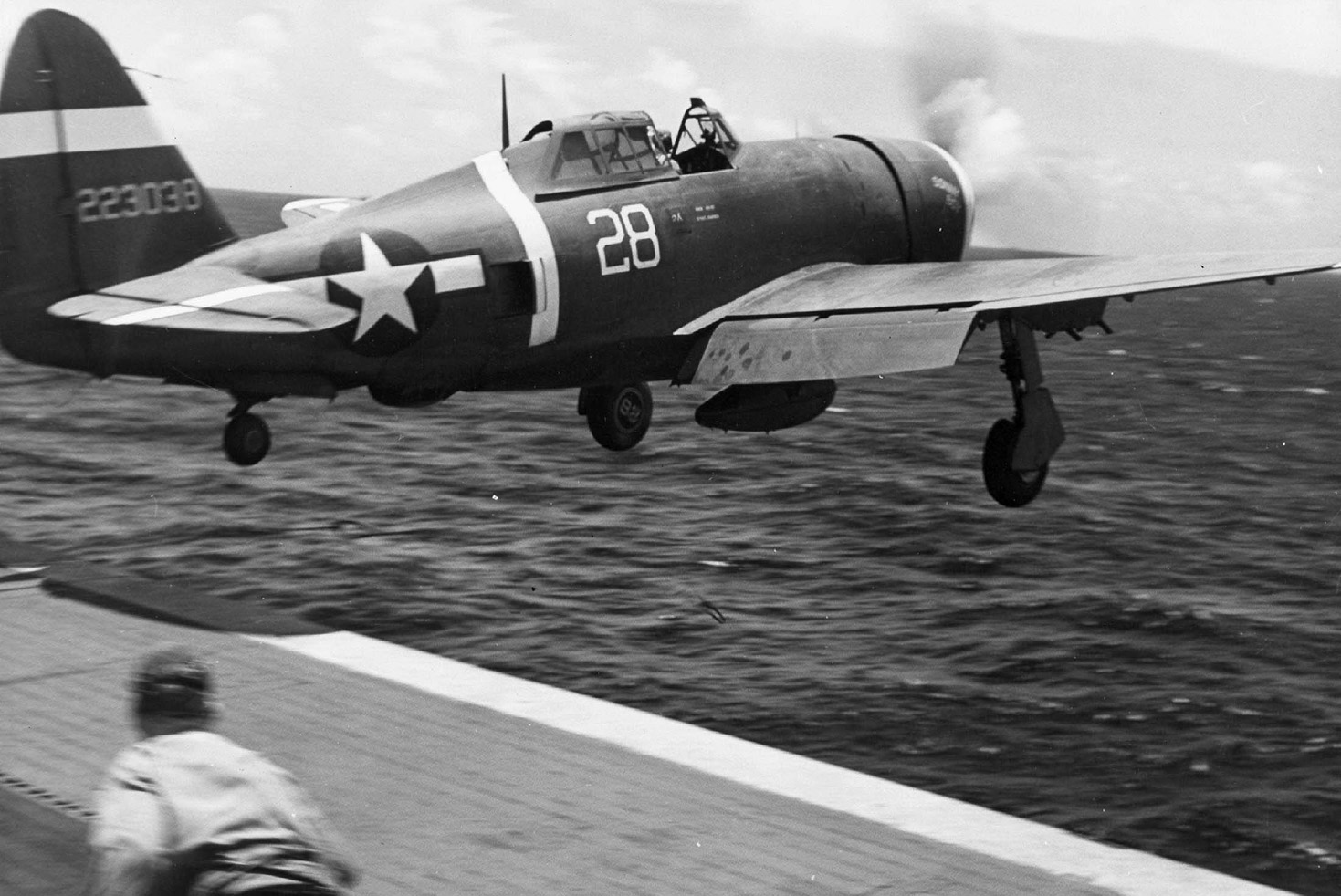
Blakeslee went on to down three more FW-190s but was twice badly shot up. He eventually led the 4th Fighter Group and emerged as one of the outstanding U.S. flight leaders of the European war. In the air continually for three years, he logged more than 1,000 combat hours during 500 sorties and was awarded the Distinguished Service Cross twice.
Despite its weight and size, the P-47 proved to be a highly effective fighter that performed sterling service through the rest of the war. It was a devastating dive bomber and more than satisfactory in dogfights. Many USAAF aces in the European Theater racked up high scores in Thunderbolts. The plane could absorb considerable damage and still bring its pilot home.
Colonel Francis S. “Gabby” Gabreski of the 56th Fighter Group, who shot down 31 enemy planes while flying P-47s, reported that one of his comrades took five direct 20mm cannon hits in his right wing but still managed to return to base. During one sortie, Blakeslee’s Thunderbolt was hit by 68 cannon shells. Yet, he returned to England, escorted by Major Goodson.
Gabreski, also a veteran of RAF Spitfire squadrons, praised the P-47’s roomy cockpit, “nice” handling, and “truly spectacular” dive performance. He and the other pilots loved and trusted the plane. One flier who preferred the Thunderbolt to the sleek, elegant North American P-51 Mustang remarked, “When flying the Jug, I always felt as if I was in my mother’s arms.”
Lieutenant Will Burgsteiner of the 359th Fighter Group wrote in his diary, “We never realized we loved the old barrel and her eight guns so much.” Boyish Captain Marvin Bledsoe of the 350th Fighter Squadron, based at Raydon, Suffolk, rhapsodized, “How I loved to fly that airplane…. I felt a surge of pride that I was a member of a combat fighter squadron and was flying the most powerful fighter ship in the world…. The P-47 Thunderbolt was the hottest American fighter plane. The more I flew the Thunderbolt, the more I liked it.”
A veteran of the Normandy invasion and Operation Market Garden, Bledsoe flew 70 combat sorties in his P-47 named Little Princess, was awarded the Distinguished Flying Cross and the Air Medal with oakleaf clusters, and published a memoir, Thunderbolt, in 1982.
Among many other fliers who were impressed with the P-47 was Luftwaffe ace and Battle of Britain veteran General Adolf Galland. After flying a captured Thunderbolt, he reported that the cockpit was big enough to walk around in. A standing joke during the war was that the best way to take evasive action in a P-47 was to undo the straps and run around the cockpit. The plane’s attributes included a low internal noise level, little vibration, prompt control response, and an efficient cockpit heating system, which, unlike the Spitfire, kept the windshield clear of frost when diving.
One distinction of the P-47 was that it probably gathered more nicknames than any other Allied plane of the war. Besides the Jug, it was affectionately known by its pilots and ground crews as “Big Ugly,” “Bucket of Bolts,” “Cast-Iron Beast,” “Repulsive Scatterbolt,” “Seven-Ton Milk Bottle,” “T-Bolt,” and “Thunder Mug.”
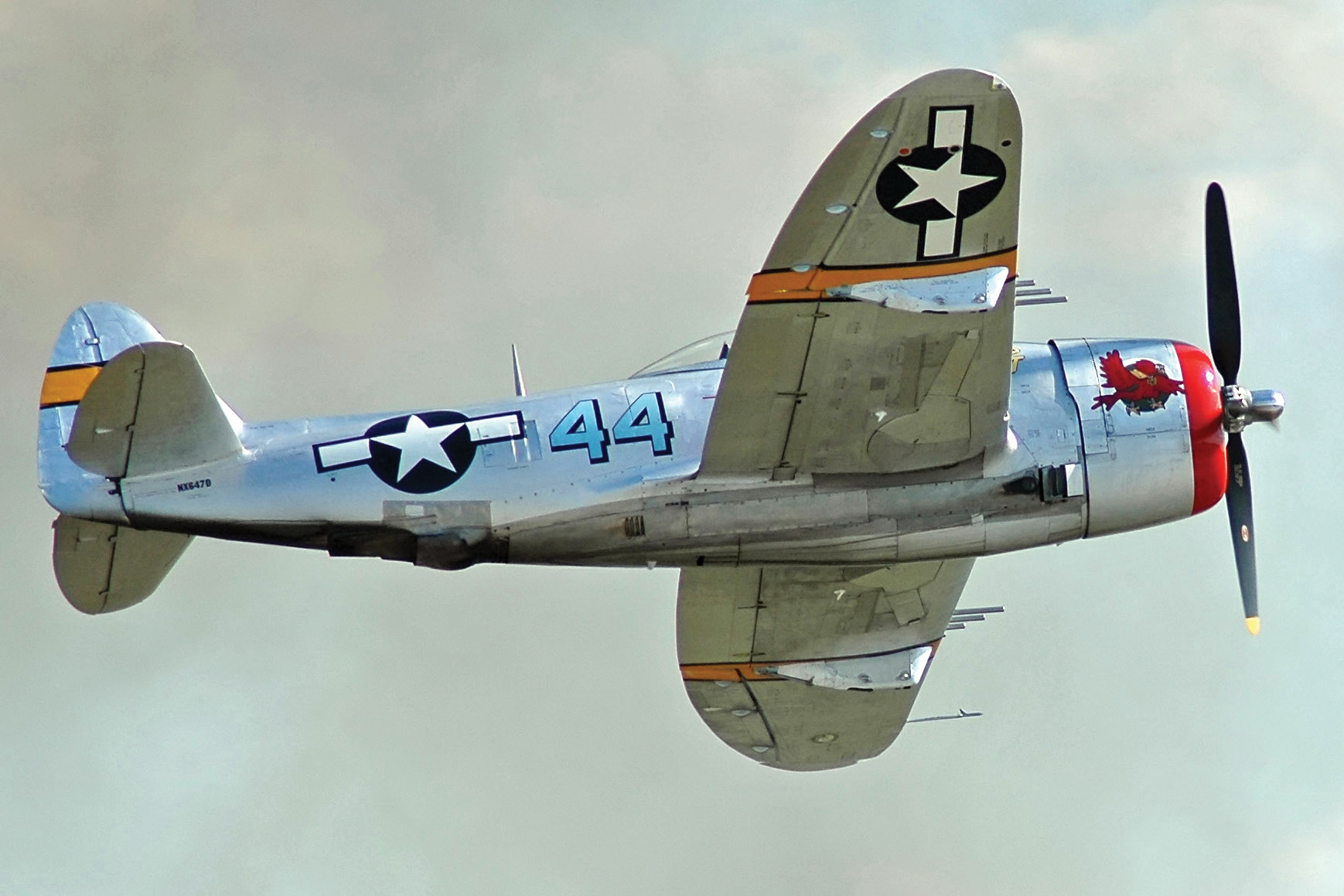
Although the P-47 was a force to be reckoned with in the air, it was sluggish in a climb and difficult to handle in takeoffs and landings. Lieutenant Harold Rosser, who flew the plane in the China-Burma-India Theater before his unit received twin-boom Lockheed P-38 Lightnings, reported, “The P-47 had no nose wheel, and instead of leaning forward to take off, it held back, leaning on its tail wheel, its tilted-up nose obstructing our forward view until it gained speed. Not until it reached a speed of 60 miles an hour did the tail come up, and until it did, we could not see the runway in front of us. The opposite was true when landing. To compensate for the blind spot, we ‘essed’ when we taxied, turning from side to side, looking to the front between turns.”
Limited pilot vision was a drawback in the early Thunderbolt variants, but this was improved when a clear-view teardrop cockpit was introduced with the P-47D model. This gave the pilot all-around visibility.
While its pilots loved and trusted the Thunderbolt, some USAAF officers in Europe thought that it used up too much runway to take off, was difficult to pull out of a dive, and that its landing gear was weak. In the Pacific Theater, however, few doubts were voiced. General George C. Kenney, the able, Canadian-born commander of the Fifth Air Force, was impressed by the performance of the plane and requested that more of his fighter groups be equipped with it.
The Thunderbolt made a significant contribution to the downfall of the Luftwaffe, the destruction of the Third Reich’s transportation system, and the eventual defeat of the German and Japanese Armies. A total of 15,579 P-47s were built, more than any other USAAF fighter, and they equipped 40 percent of overseas fighter groups in 1944 and 1945. The only American fighter that surpassed the Thunderbolt in all-around performance was the lighter P-51 Mustang, generally regarded as the best single-seat, piston-engine fighter of the war. As Colonel Gabreski observed, however, the P-51 fell short of the Thunderbolt in dive bombing and could not withstand the kind of punishment it absorbed routinely.
With double the range of the P-47s, Mustangs eventually took over escort duties for the Eighth Air Force bomber streams. The Thunderbolt pilots had acquitted themselves heroically, but even when fitted with disposable fuel tanks the planes lacked the necessary range. The final push for P-51s was accelerated by a disastrous B-17 mission on October 14, 1943. On that “Black Thursday,” 291 unescorted B-17s attacked the ball-bearing plant at Schweinfurt for the second time. They inflicted considerable damage, but 60 Fortresses were destroyed and 140 damaged. A further 88 Eighth Air Force planes had gone down in the previous week, and the losses were intolerable.
The first mission escorted by Mustangs was mounted on December 5, 1943, and they then routinely accompanied B-17s and Liberators to Berlin and back. By the end of the European war, all but one of the Eighth Air Force fighter groups were equipped with Mustangs.
The arrival of the P-51s changed the tide of the air war in Europe, but the P-47 pilots remained fiercely loyal to their corpulent Jugs and insisted that they were superior. Improved Thunderbolt variants continued to render gallant service on all fronts, from northwestern Europe to North Africa and from Italy to the Pacific. They were based in Australia from late 1943, and P-47Ns escorted Boeing B-29 Superfortress heavy bombers of the Twentieth Air Force on long over-water missions.
The last of a dozen variants of the famous Thunderbolt, the P-47N was built solely for deployment in the Pacific Theater. A total of 1,816 were deployed. The P-47Ns specialized in bombing and strafing Japanese shipping, rail lines, and airfields.
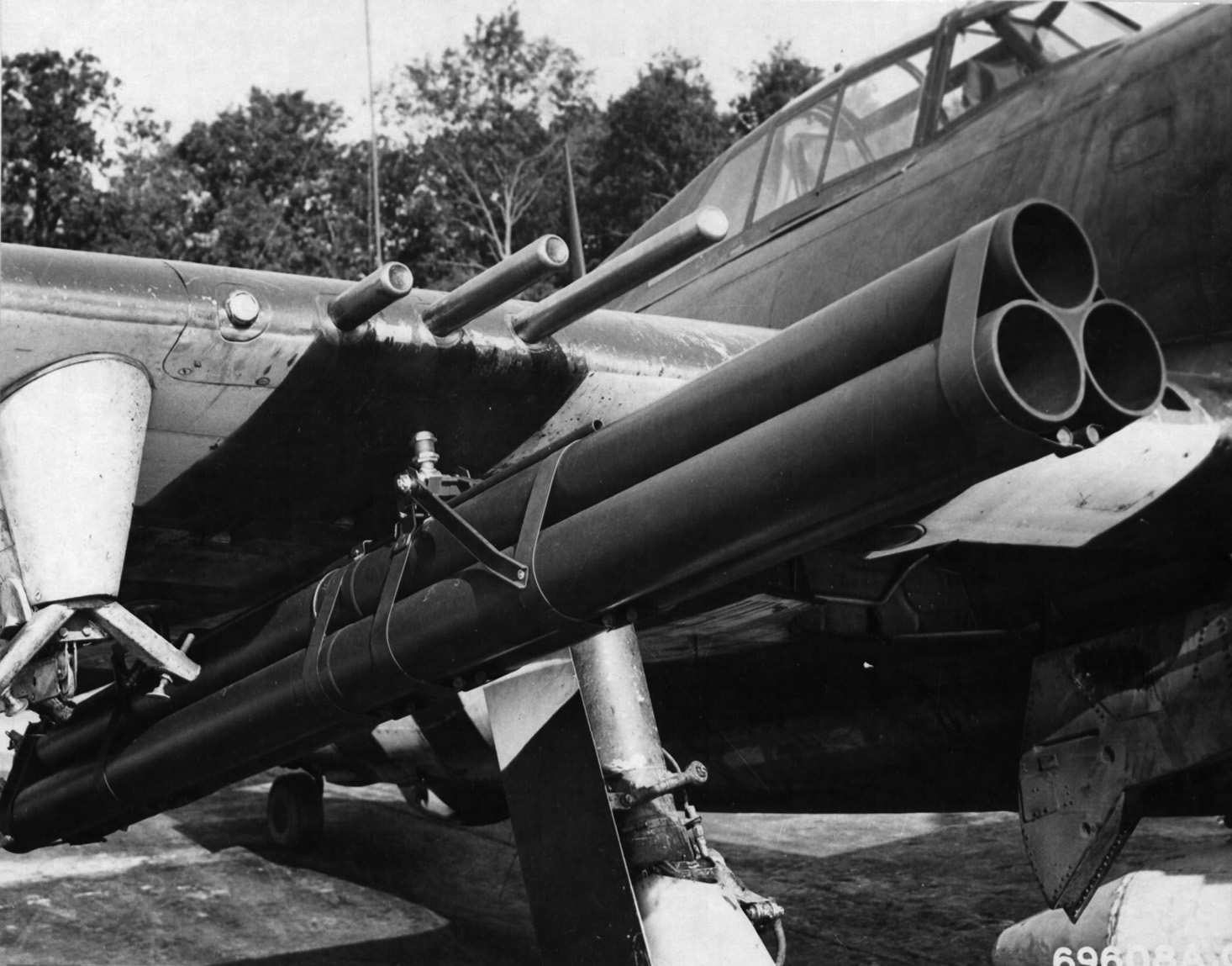
P-47 and wing-mounted rockets. These tube-fired M8 rockets were replaced with the HVAR (High Velocity Aerial Rocket) fired from underwing pylons.
During the big Marine-Army invasion of Saipan in mid-June 1944, Thunderbolts of the Seventh Air Force’s 19th and 73rd Fighter Squadrons supported Navy planes in blasting Japanese caves and other strongpoints with napalm. They also flew in support of U.S. and Allied troops in many other Pacific actions, including the reconquest of New Guinea, the Philippines campaign, and the invasions of Guam, Tinian, Iwo Jima, and Okinawa.
The RAF used Thunderbolts for training in England and Egypt, and they were widely deployed for strafing, reconnaissance, and “rhubarb” sorties in the Far East. While several squadrons in India and Burma converted from Hawker Hurricanes, RAF P-47s armed with 500-pound bombs, rockets, and napalm specialized in low-level assaults on Japanese troop concentrations and their long supply lines. They covered British-Australian landings in Burma and continued to harass the retreating enemy during the last year of the war. A total of 830 Thunderbolts were used exclusively against the Japanese during the bitter Burma campaign.
RAF Thunderbolts in the Far East bore white recognition bands to prevent confusion with Japanese Nakajima Ki-84 Hayate fighters, which closely resembled them. USAAF Thunderbolts, meanwhile, escorted Allied C-46, C-47, and C-54 transport planes flying over the Himalayan “Hump” from India to China.
It was in the European Theater, before, during, and after the momentous invasion of Normandy by the British, American, and Canadian Armies on Tuesday, June 6, 1944, that P-47s found a new role and came into their own with a vengeance. Along with 10 Eighth Air Force fighter groups and the RAF’s deadly Hawker Typhoons and Tempests, Thunderbolts took off daily from English airfields to sweep across the English Channel and pound German tanks, convoys, airfields, supply dumps, trains, and communication lines with bombs, rockets, and machine-gun fire. After the Allied troops broke out from their beachheads, the planes operated from hastily laid airstrips in France.
As long as weather conditions permitted, the Thunderbolts, Typhoons, and Tempests kept up the pressure as the Allied armies pushed across France, Belgium, Holland, and into Germany. They cheered the embattled riflemen in the foxholes and terrified their opponents. Over the front lines of northwestern Europe in 1944-1945, the P-47 proved itself a fearsome weapon. The effect of it firing eight .5-inch Colt-Browning machine guns in its wings was described by one observer as being like “driving a five-ton truck straight at a wall at 60 miles an hour.”
Thunderbolts were the frontline workhorses of General Hoyt S. Vandenburg’s Ninth Air Force, history’s largest tactical air command, which had been reformed in the fall of 1943 after operations in North Africa, Sicily, and Italy, to support ground units in Normandy. It boasted 3,500 aircraft.
By May 1944, 13 of the Ninth Air Force’s fighter groups had been equipped with P-47Ds, tailored for their critical role as low-level strafers and bombers. They had upgraded engines and propellers, and racks were fitted beneath their wings to carry 500-pound bombs and, later, rocket projectiles. After the Normandy landings, the Ninth Air Force followed the example of the RAF’s “cab rank” tactics with Typhoons. U.S. Army tank crews with VHF radio sets were able to summon bomb-carrying Thunderbolts to attack specific targets.
With an overall loss rate of only 0.7 percent, the P-47s destroyed or damaged 6,000 enemy tanks and armored cars, 68,000 trucks, 9,000 locomotives, 86,000 pieces of rolling stock, and 60,000 horse-drawn vehicles. Flying 545,575 sorties and logging an estimated 1.35 million combat hours, they shot down 3,752 enemy planes with the loss of 824 in aerial battles. By August 1945, Thunderbolts had flown on every front and destroyed more than 7,000 German and Japanese aircraft in the air and on the ground.
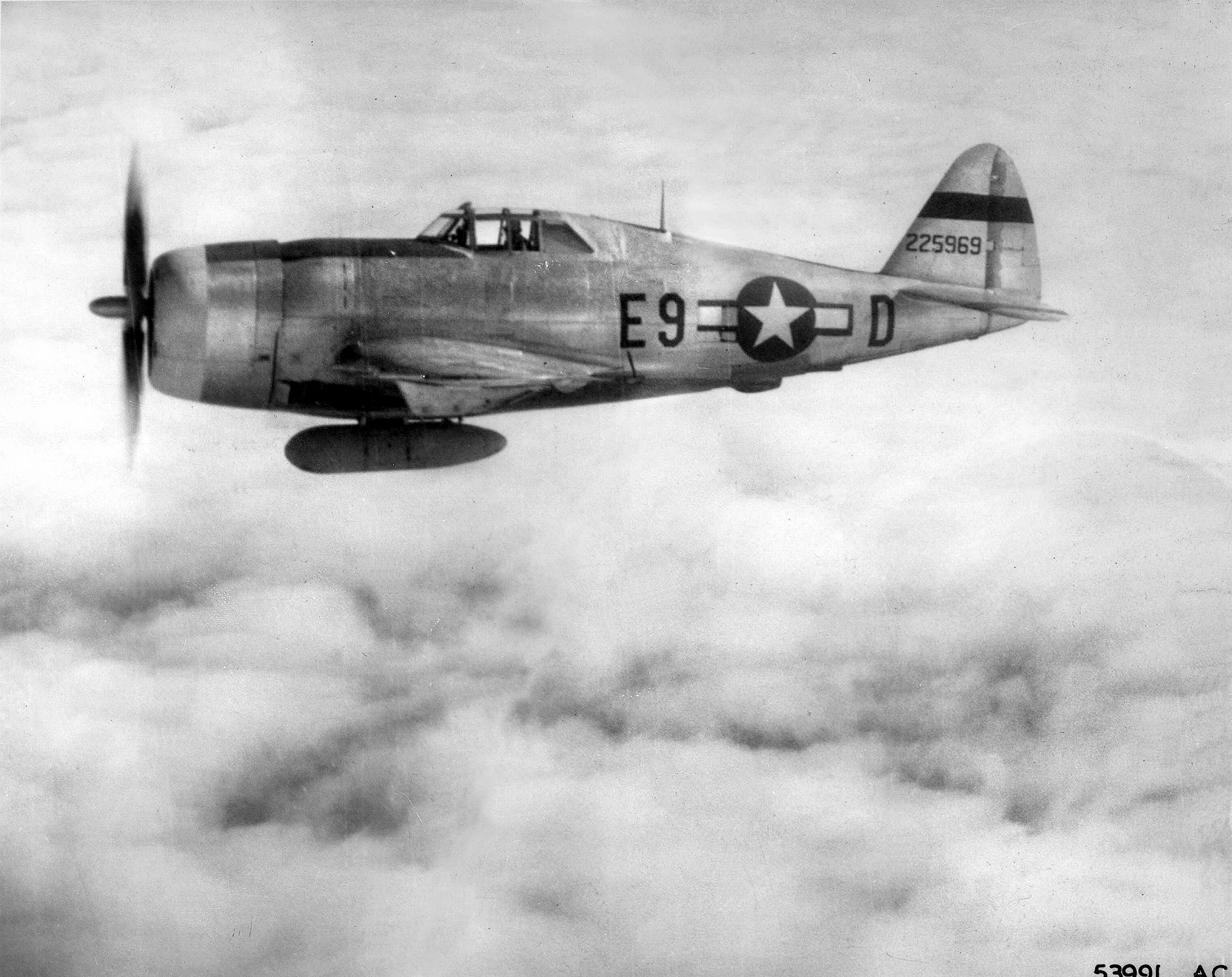
The most aerial victories in the European Theater were scored by Colonel Hubert A. “Hub” Zemke’s 56th “Wolfpack” Fighter Group. His P-47s racked up 665.5 kills, and he himself was credited with 17.75 enemy planes destroyed in the air and 8.5 on the ground. The conservative, gentlemanly Zemke was described as the “fightingest” fighter commander in Europe because he regularly led his pilots into action. He also was an innovative tactician. Both he and the gallant Colonel Gabreski, the third-ranking American air ace of all time, ended the war in German prison camps.
The production of Thunderbolts ended in November 1945. P-47Ds and P-47Ns remained in service with the USAAF and when it became the U.S. Air Force in September 1947, and a few flew with Air National Guard squadrons before being phased out in 1955. P-47s also operated with the air forces of Brazil, Bolivia, Chile, Colombia, Dominica, Ecuador, Guatemala, Honduras, Iran, Italy, Mexico, Nationalist China, Peru, Turkey, and Yugoslavia.
When the Korean War broke out on June 25, 1950, Defense Department planners decided that piston-engine fighters were sorely needed for ground support. They tried to find enough P-47s for the task, but the planes, which had perfected such tactics in World War II, were almost out of inventory. A few Thunderbolts saw action in Korea, but the Air Force had no choice but to rely mainly on P-51s and the new breed of jet fighters.
Thunderbolts were featured on the screen in an acclaimed documentary and a Hollywood feature film. On direct orders from General Henry “Hap” Arnold, commander of the Army Air Forces, directors William Wyler and John Sturges went to Corsica in 1944 and spent nine months creating a documentary film, Thunderbolt. It focused on the 57th Fighter Group as it fought in Italy, supporting Allied ground troops on the Gustav Line and raiding the northern port of Spezia. Cameras mounted in a converted North American B-25 Mitchell medium bomber were used to photograph the P-47 raids, and Lieutenant Colonel Wyler’s unit was awarded a citation and four battle stars. The film was released in October 1945, and hailed as “brilliant.”
P-47 fighter group actions in the Normandy campaign were vividly depicted in the rousing 1948 Warner Brothers release, Fighter Squadron. Directed by Raoul Walsh and laden with combat footage, it starred Edmond O’Brien, Robert Stack, Henry Hull, and Shepperd Strudwick, with a young Rock Hudson making his film debut in a bit part.
Author Michael D. Hull is a frequent contributor to WWII History on a variety of subjects. He resides in Enfield, Connecticut.
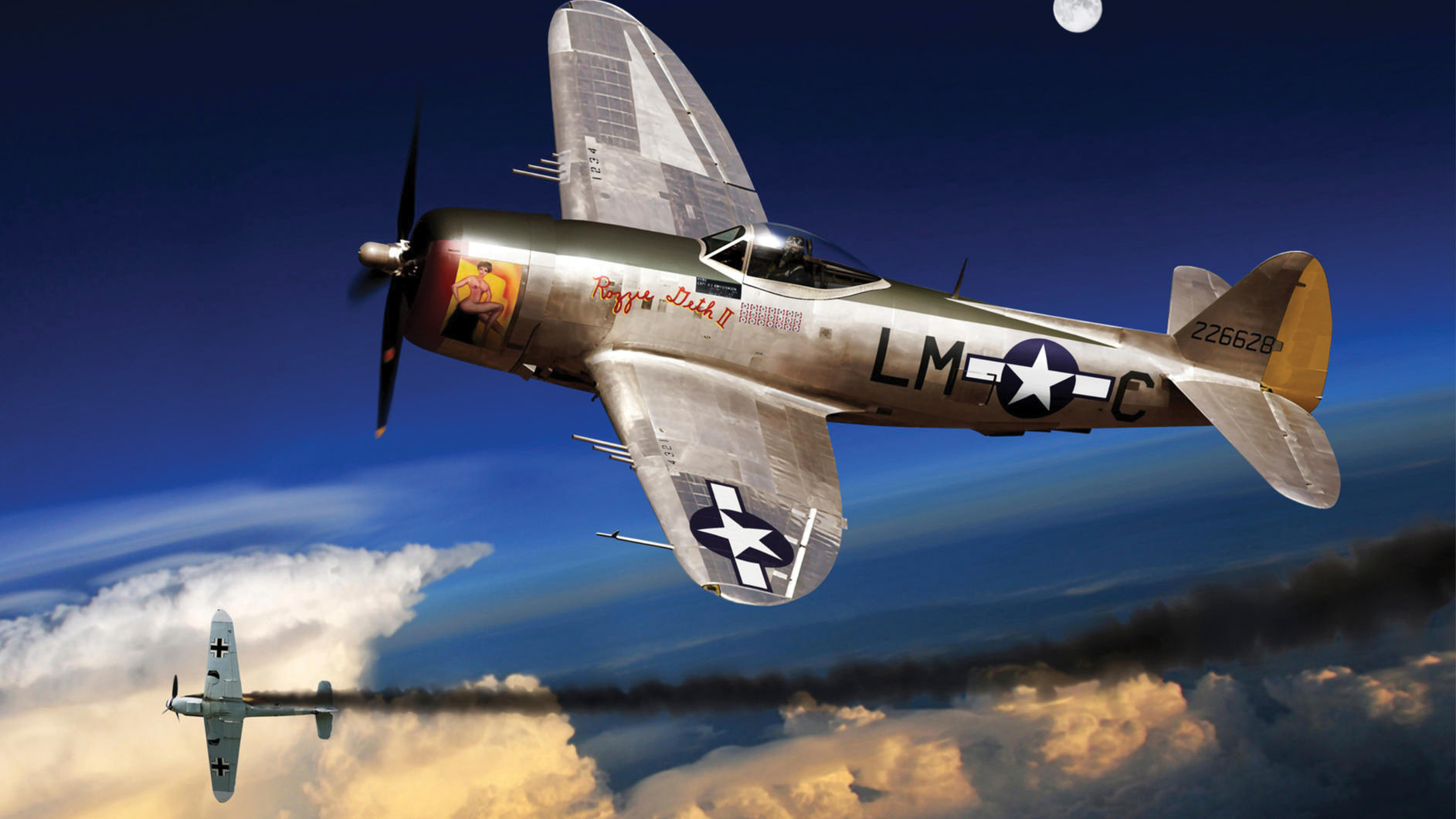
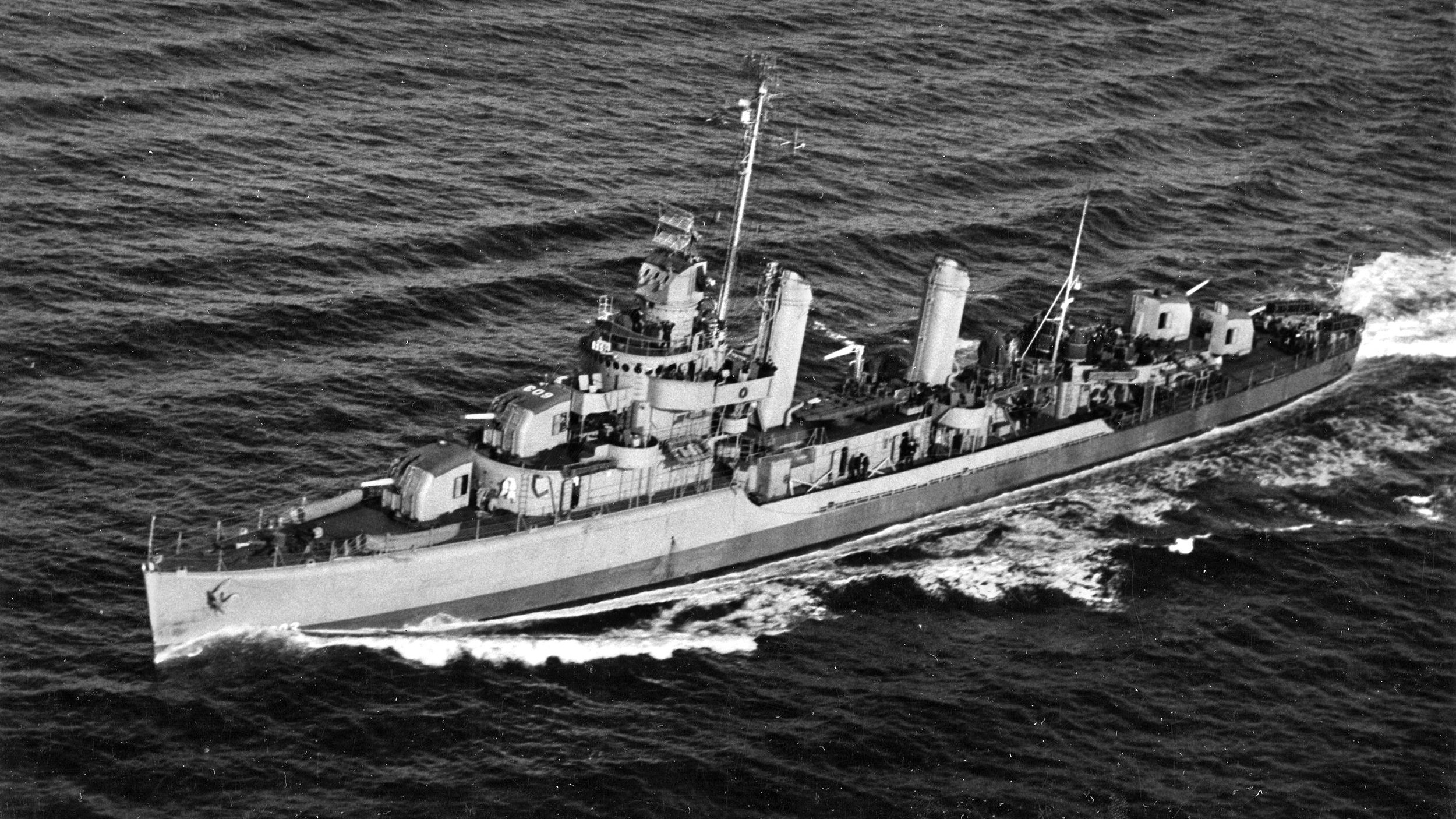
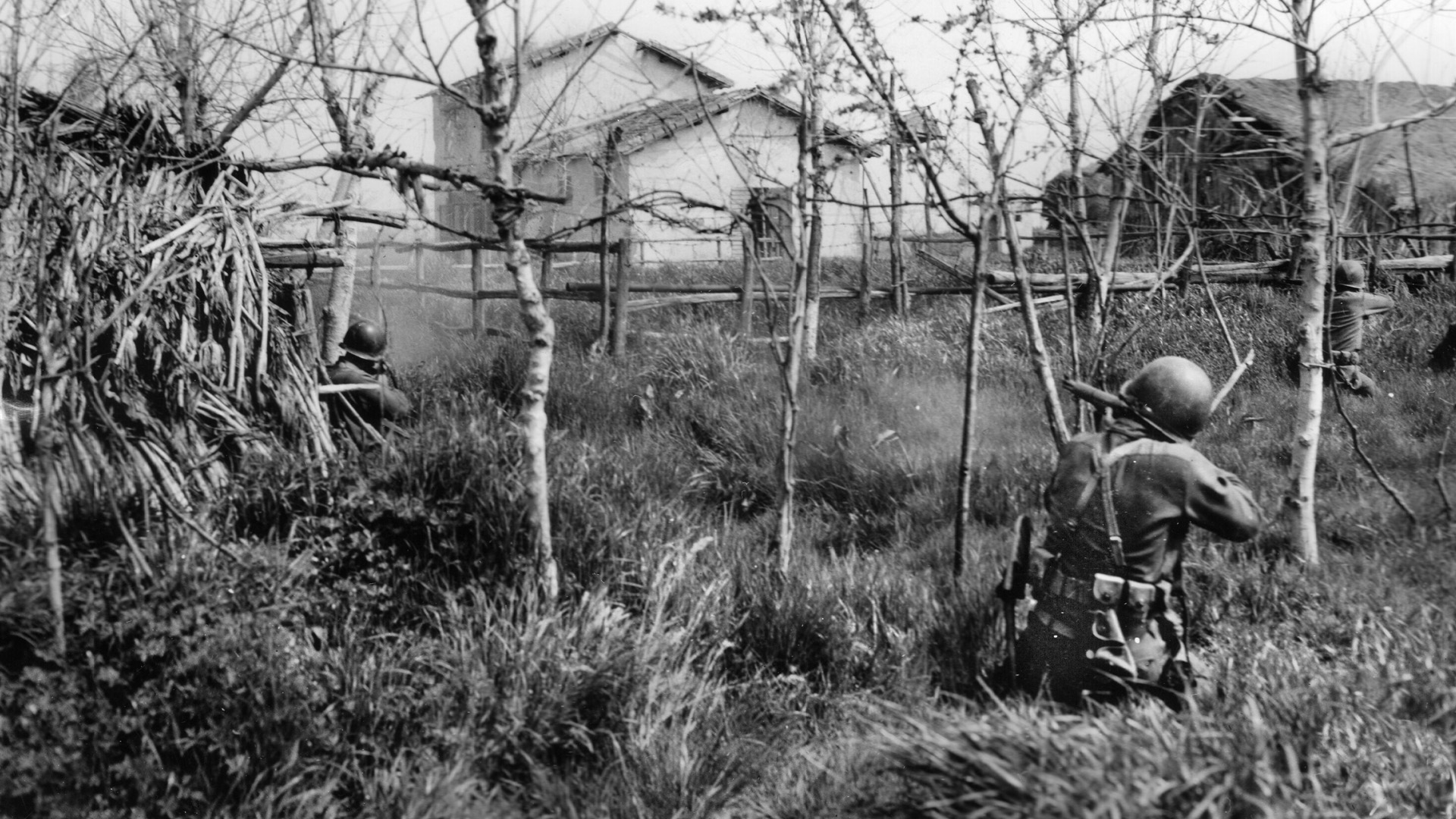
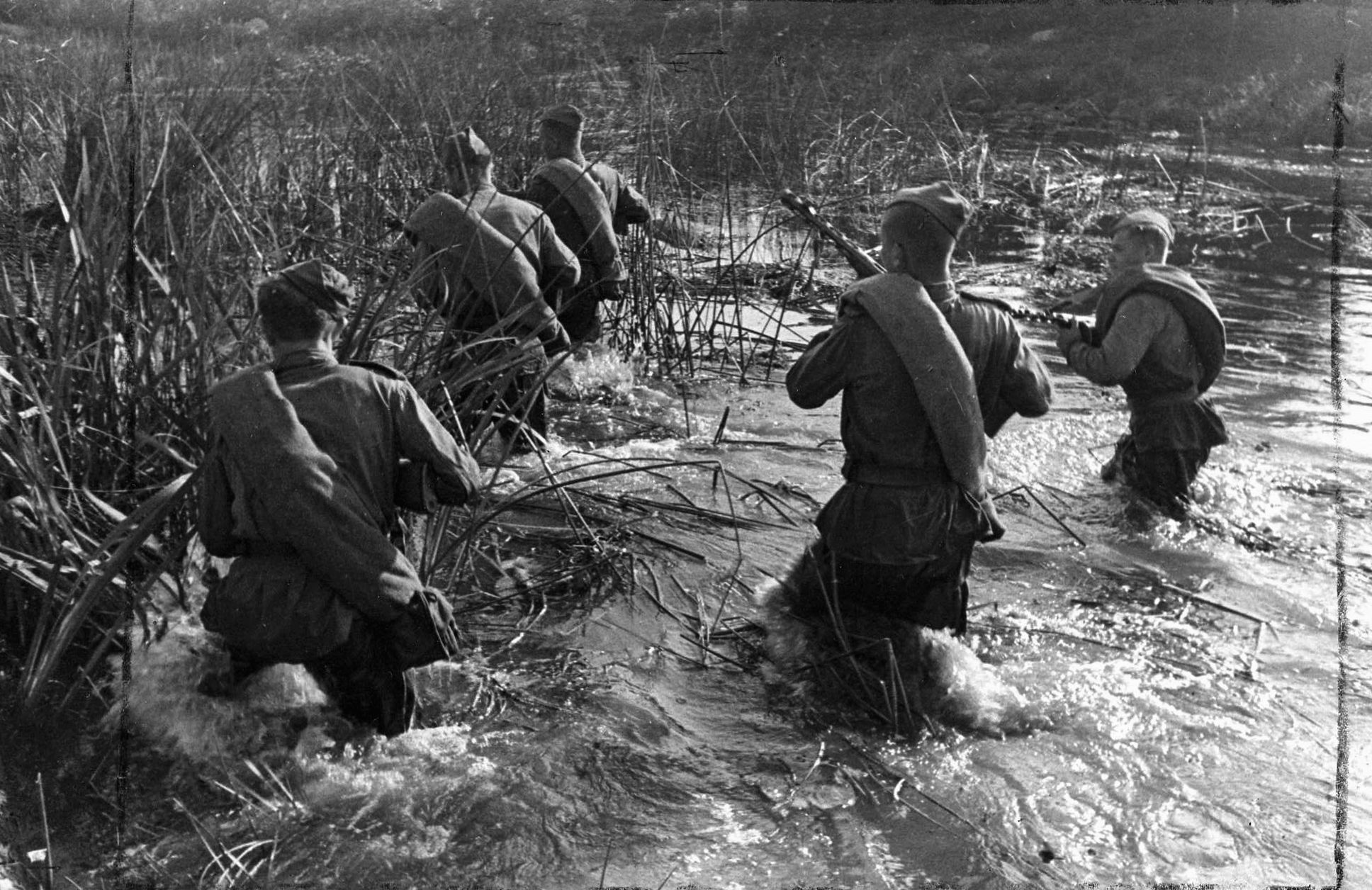
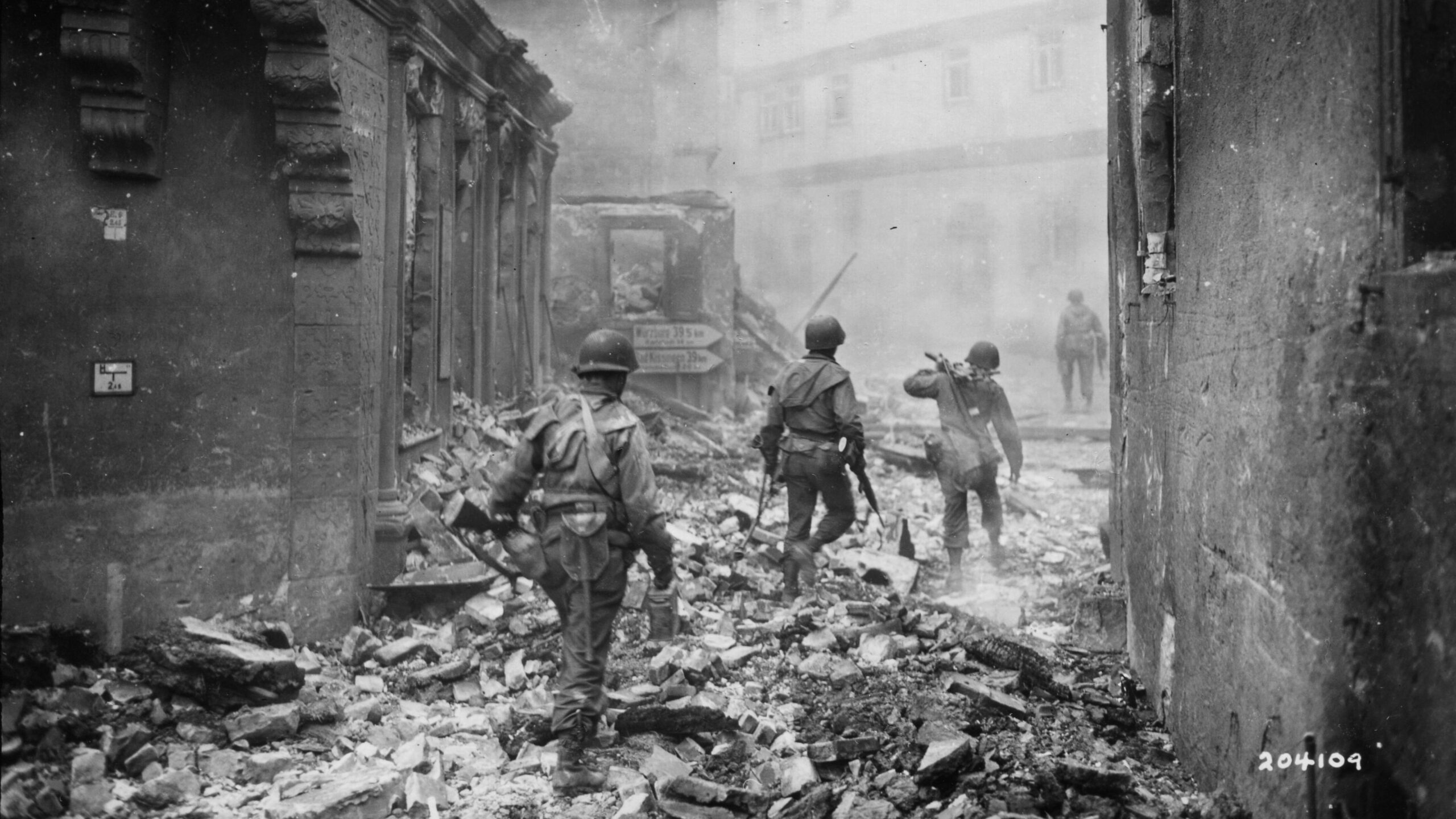
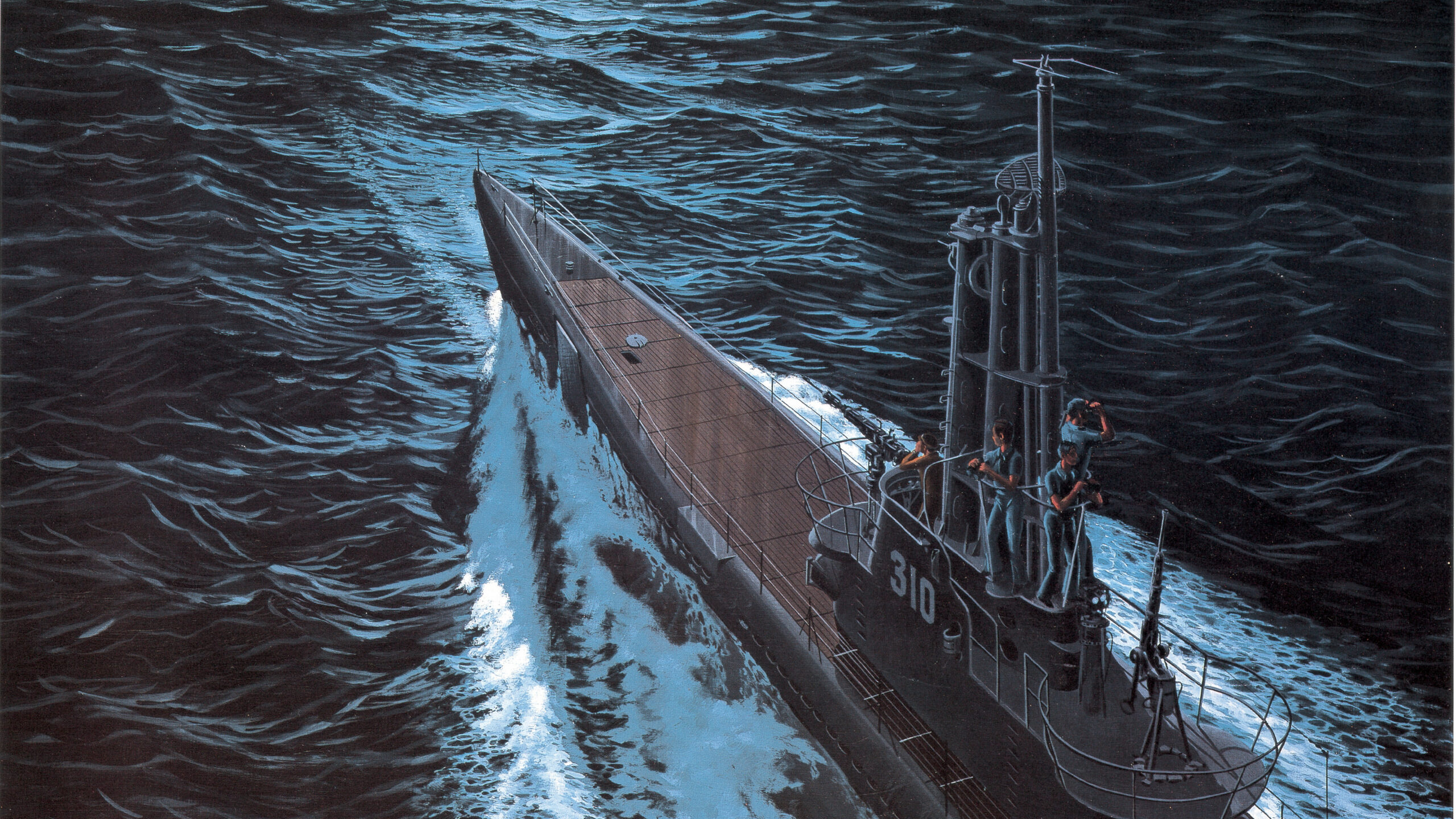
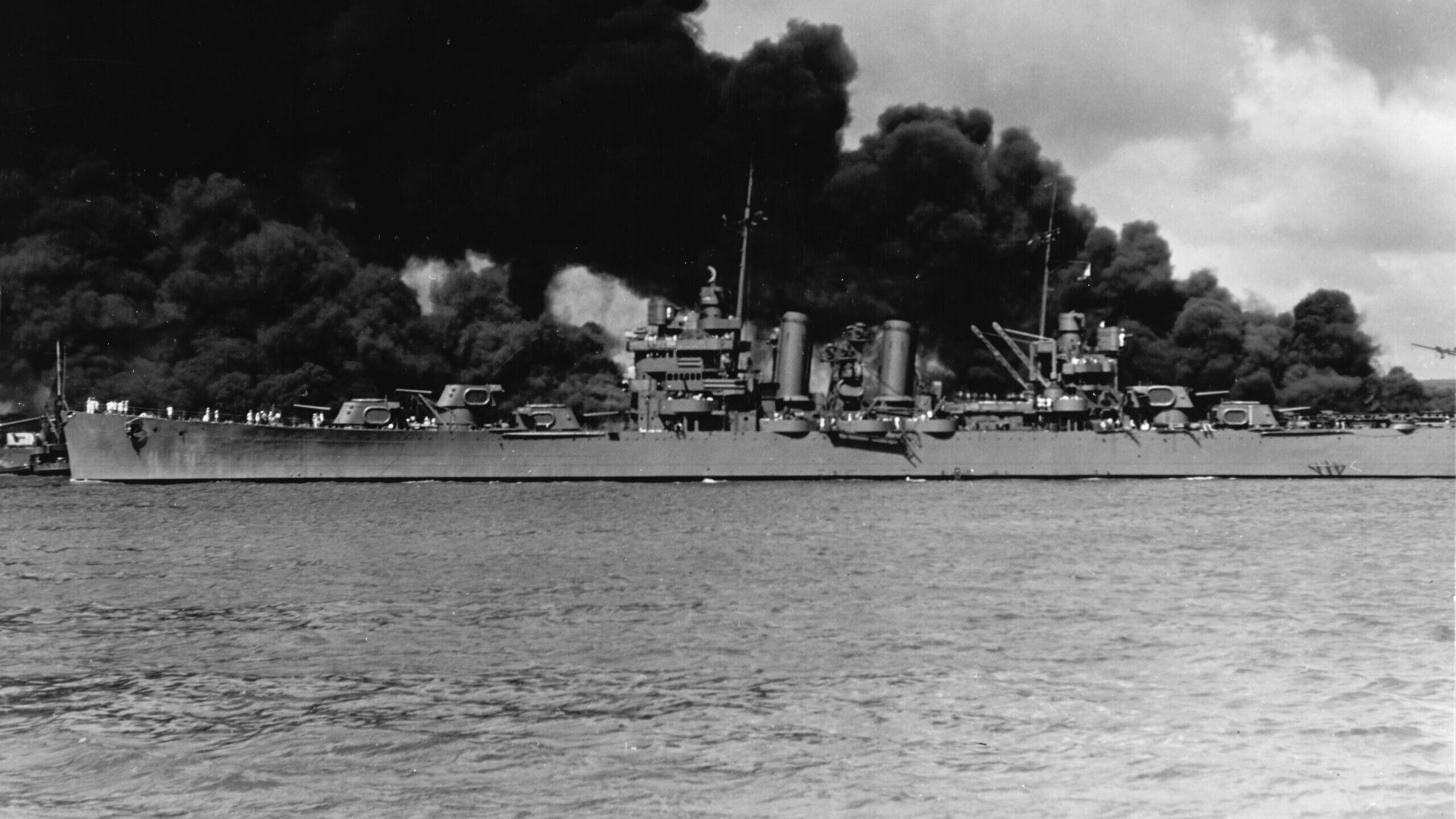
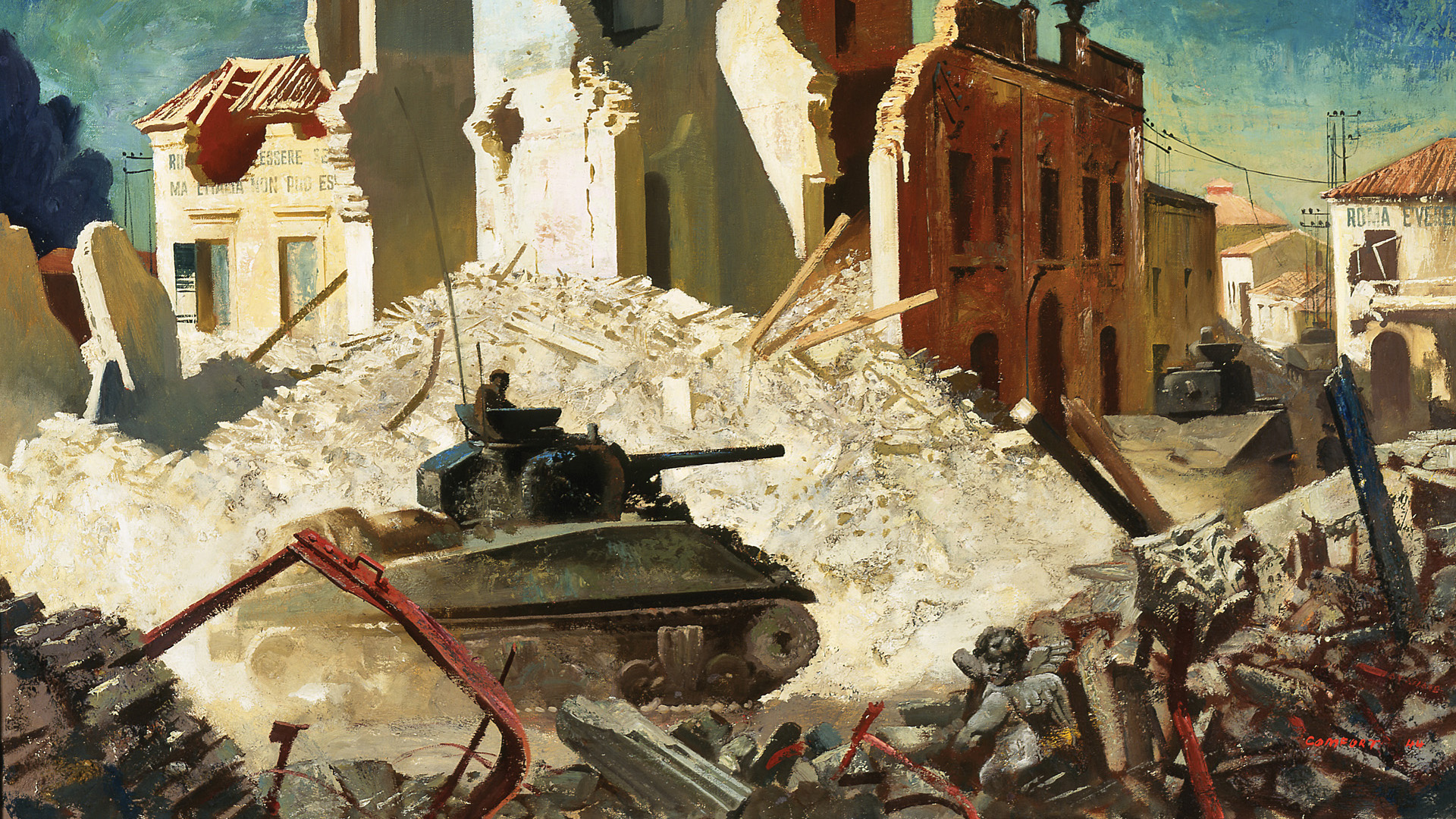
The photo showing P-47D E9-D says it was originally assigned to the 56th Ftr. Grp. However, in the photo it has a yellow (not red) cowl used on 361st Ftr. Grp. planes rather than red as on 56th a/c. Also, the E9 code belongs to the group’s 376th Ftr. Sqdn.